Learning about EOS Switches in Pinball
The end of stroke switch (EOS) is your pinball flipper assembly’s best friend. The End Of Stroke switch keeps the flipper in check, but it does have a hard job. It gets beat up; many times per game, and eventually, you will need to repair or replace that old end of stroke switch.
Which EOS switch do you need, and what is an EOS switch for? Click “Read More” at the top right for more info.
We will not be going into a lot of deep technical detail, but we will try to go over some of the basics and why there are so many flavors of End Of Stroke Switch (EOS Switch) in our Marco Pinball store!
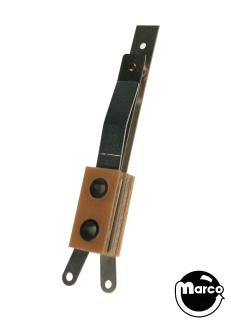
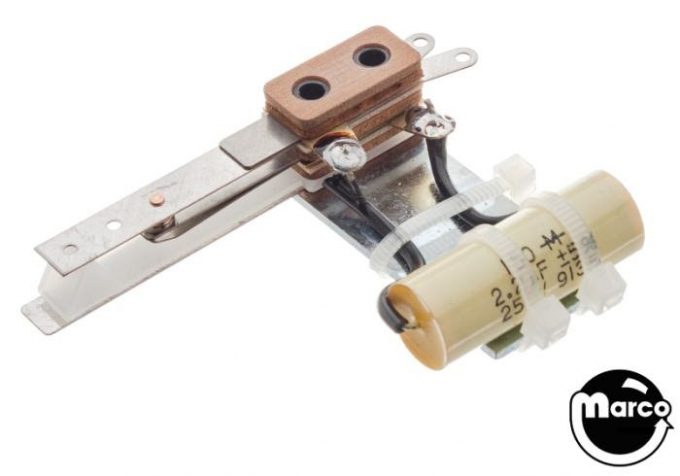
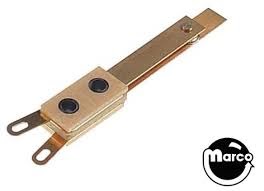
Basically, your EOS switch will shift your flipper coil from it’s low resistance and high-power winding to a higher resistance, low-power hold winding at the end of the flipper shaft’s stroke. Simple as that! All Electro-Mechanical pinball games with flippers, and all Solid State pinball games until the 90’s used a system like this, we can call it a mechanical system. This setup works well, IF the EOS switch is adjusted well, and kept clean. You run into problems when the EOS switch DOESN’T open, and burns the coil up. Or, if your EOS switch is dirty or not adjusted properly, you will experience very weak flipper performance.
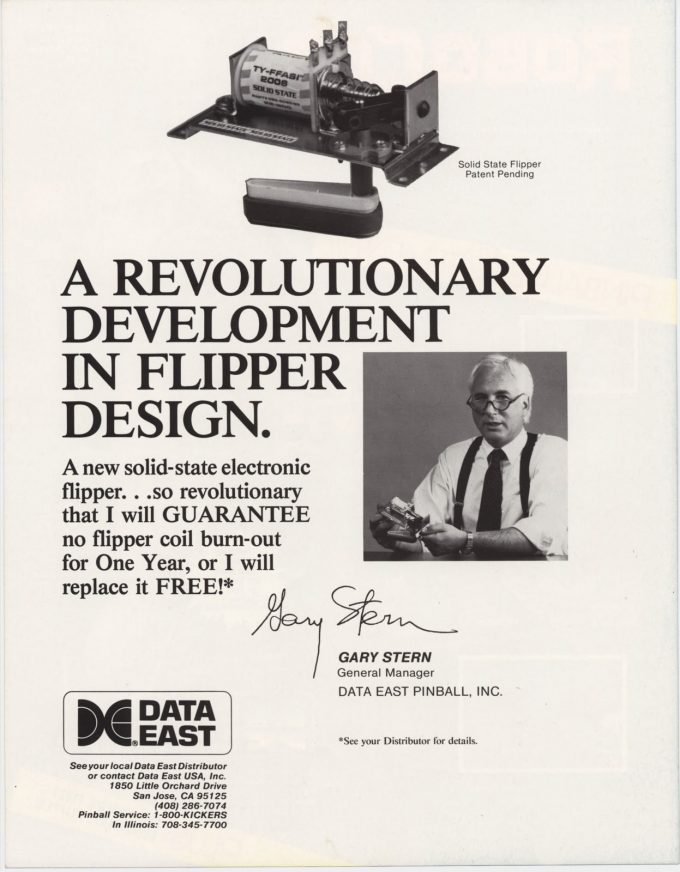
When flippers became more powerful in the late 80’s, many operator’s biggest complaints were having service calls for weak flippers, which ended up being simple EOS switch cleaning. In 1989 Data East introduced an electronically controlled flipper system that eliminated the pesky current carrying EOS switch. Gary Stern, the current president of Data East Pinball, promised operators that they wouldn’t burn out flipper coils for a year, or he would buy you a new one! Williams followed suit in 1992 with The Addams Family and their excellent Fliptronic system.
This was the birth of Solid State flippers, a system that utilized a computer that would switch pinball flippers on, and regulate or change the voltage applied to the coil at a predetermined time, with or without input from an EOS switch, measured in milliseconds! Data East and Williams did this in different ways, and they are terribly interesting, and well documented online if you wanted to dig deeper!
With the history and theory out of the way, let’s get into what YOU need for your game.
If your game uses a Mechanical Flipper, you need an EOS switch that is normally closed, with sturdy tungsten contacts. Some games will also have unique configurations to their EOS switches. Some will have additional switches in the stack to power an upper flipper, or sometimes to activate a lane change feature.
These Mechanical flipper EOS switches need to be clean, adjusted tight at rest and opened just slightly at the full stroke of the flipper. The EOS switch’s contact is generally a large shiny tungsten contact, which has excellent wear properties and can be cleaned with a small points file. These EOS switches will arc and spark when they open and close due to exciting electromagnetic principles I have no authority to write about… This results in pitting and material exchange from the opposite surfaces of the switch.
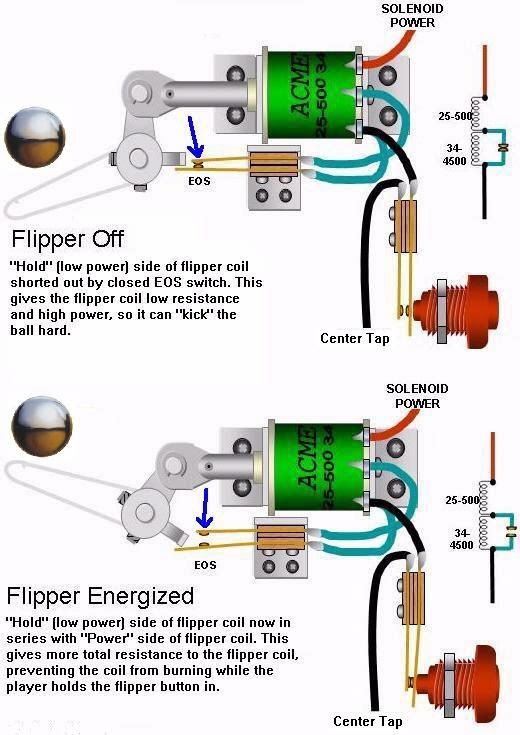
In my experience, EOS switches can last a LONG time. The contacts wear down to where they are only a millimeter thick, but will still function. At this point. It is absolutely time to replace the switch. When the contacts wear down, the switch must be adjusted to a point where the geometry will put extra stress on the blades, or to a point where you will not be able to rely on it to function reliably. I have also seen many EOS switches fail where one contact decides it just does not want to be part of the switch blade anymore, and ejects itself from the assembly after years and years of hard work. As a general rule of thumb, replace the switches when they have worn down and deformed. A dirty switch can be rehabilitated.
Filing clean an EOS switch is more than just filing the contact surface flat and clean. Try to get all edges and around the perimeter to ensure good connectivity.
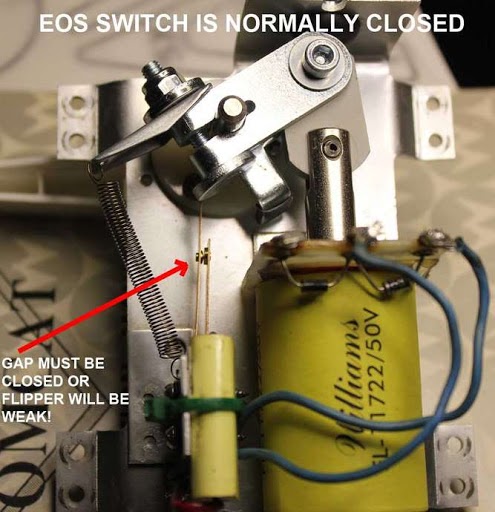
The counterpart, the Solid State flipper EOS switch will be normally open at rest on a WPC game, or closed on Data East, Sega and Stern games. The switch contact is also much smaller. These switches are used in their respective systems to tell the computer ‘Hey, the flipper is at its maximum travel!” You may be thinking, “well what do I need the EOS switch on a solid state flipper game if the computer automatically switches to its ‘hold’ mode?” Ah! Good question! The EOS switch ensures the flipper WILL stay up if it changes states.
Say you are cradling a few balls during a multiball, and one ball in play hits your flipper bat. The flipper will fall, causing all of your balls to drain, and you walk away frustrated. Well what happened? The computer knows that you energized the flipper, and it has applied its holding voltage, but when the ball hit the flipper bat, and it started to cave, the computer had no idea that the flipper had started to drift downward. A properly functioning EOS switch would have let the computer know a state change had occurred, and to re-energize the flipper momentarily to keep the flipper up, and your balls safe and sound!
Solid State EOS switches (Data East/Sega, WPC, Stern) do not have high failure rates like their arcing counterparts in mechanical assemblies. It is common to have wires fall off their solder tabs, and to find broken switch blades due to massive amounts of wear, but all in all, they do not take the same level of maintenance. As a rule of thumb, do not clean these switch contacts with anything abrasive such as a file or a flexstone! A business card or card stock will be fine to remove dirt.
If you do find you need to replace your EOS switch, We have many flavors, and can all be found HERE.
Written by Kyle Spiteri
Watch PinTech LIVE with Kyle Spiteri every Thursday at 3PM Eastern to learn more about pinball repair!
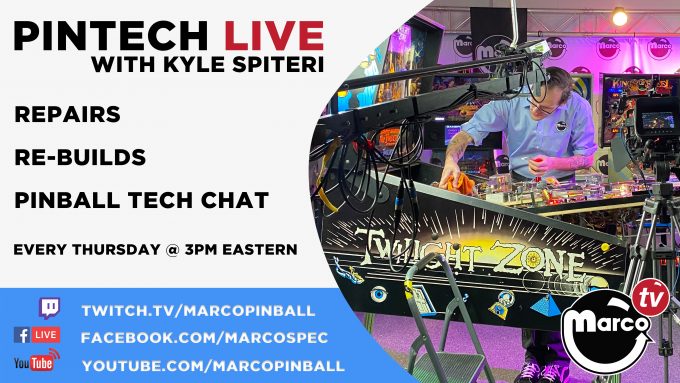
Tags: eos switch, flipper coil, Marco Pinball, Pinball, pinball repair
